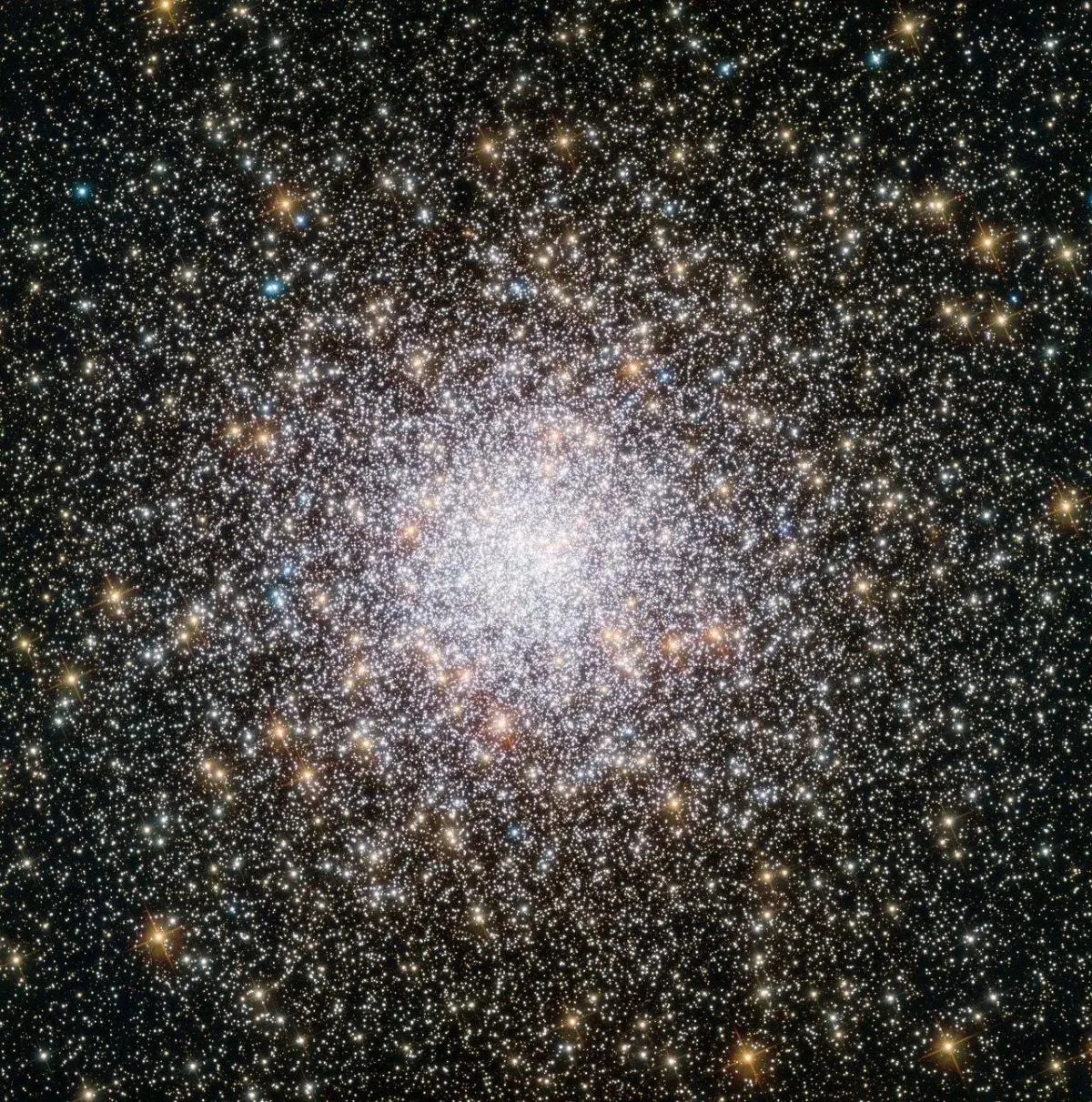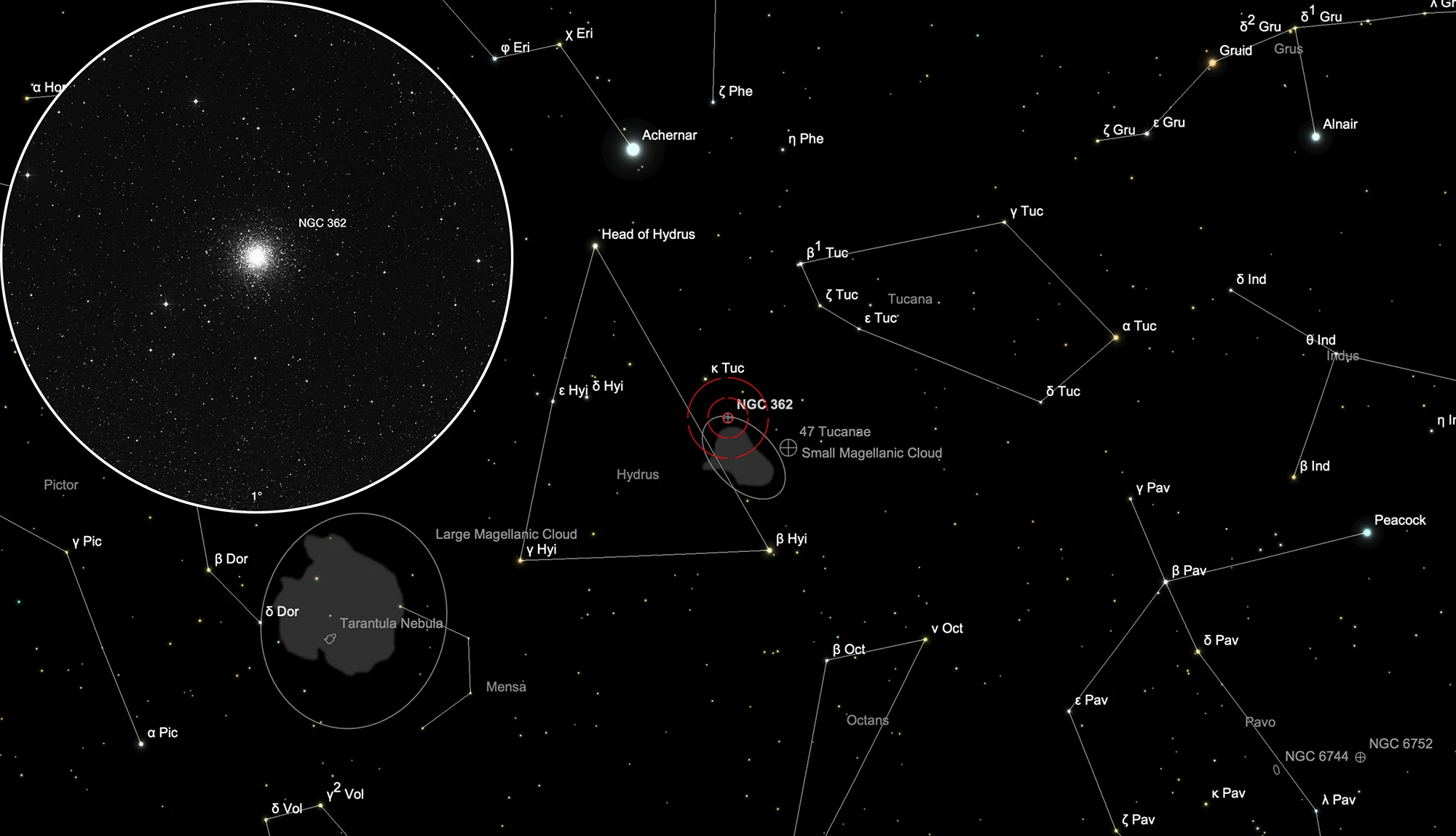Globular Cluster NGC 362

History
This globular cluster was discovered by Scottish astronomer James Dunlop on 1 August 1826. He was observing with his selfmade 9-inch reflecting telescope at his home in Parramatta (NSW) in Australia. The cluster was recorded as Δ 62, observed 11 times with the summary description: «A beautiful bright round nebula, about 4' diameter, exceedingly condensed. This is a good representation of the 2nd of the Connaissance des Temps [Messier 2] in figure, colour, and distance; it is but a very little easier resolved, rather a brighter white, and perhaps more compact and globular. This is a beautiful globe of white light; resolvable; the stars are very little scattered.» [50]
John Herschel listed this cluster as h 2375 and observed it four times with his 18.3-inch reflecting telescope from South Africa. He first observed it on 12 August 1834 (sweep 482) and noted: «Fine, highly condensed globular cluster; pretty suddenly brighter middle; diameter 4'.» On 3 November 1834 (sweep 509) he wrote: «Globular cluster. Very bright; very large; pretty suddenly very much brighter middle; round; 5' or 6' diameter; all resolved.» Observing the next night (sweep 510), he described it as follows: «Globular cluster; very bright; very little extended; pretty gradually very much brighter in the middle. Diameter of more condensed part = 60s ± in RA; but there are loose stars to a considerably greater distance, stars 13 or 14 mag all nearly equal and distinct, but run into a blaze in centre.» [11]
Physical Properties
NGC 362 is one of roughly 150 known globular clusters in the Milky Way, but it stands apart due to its unusually young age. This youthfulness is revealed by the cluster’s chemical makeup. In the aftermath of the Big Bang, the universe contained mostly hydrogen and a small amount of helium. The first stars formed from this primordial mix and, through nuclear fusion, began creating heavier elements — what astronomers refer to as «metals». However, this fusion process eventually exhausts a star’s fuel or leads to instability. Massive stars end their lives in explosive supernovae, scattering their enriched material into space. This debris becomes the building blocks for new stars, meaning younger stars tend to have higher metal content than older ones.
NGC 362’s stars have a notably high concentration of metals, indicating they formed more recently than those in most other globular clusters. While globular clusters are typically much older than the bulk of stars in their galaxies, the stars in NGC 362 are estimated to be 2 to 3 billion years younger than those in other Milky Way clusters. [261]
| Designation | NGC 362 |
| Type | GCL (III) |
| Right Ascension (J2000.0) | 01h 03m 14.3s |
| Declination (J2000.0) | -70° 50' 52" |
| Diameter | 14 arcmin |
| Visual magnitude | 6.8 mag |
| Metric Distance | 8.600 kpc |
| Dreyer Description | globular, vB, vL, vC, vmbM, st 13-14 |
| Identification, Remarks | h 2375; GC 193; GCL 3; ESO 51-SC13 |
Finder Chart
The globular cluster NGC 362 can be found in the Small Magellanic Cloud, which is located in the constellation Tucana. Unfortunately it is not visible from Europe. On 11 October it in opposition with the Sun and is therefore highest in the sky at local midnight.
